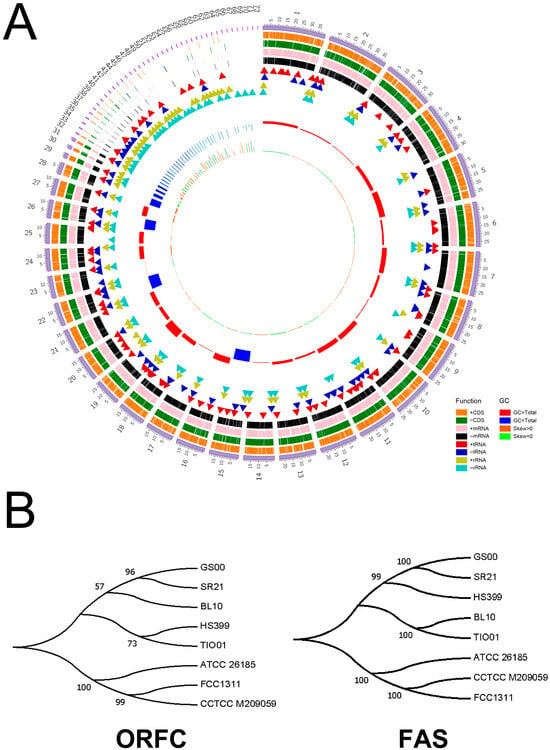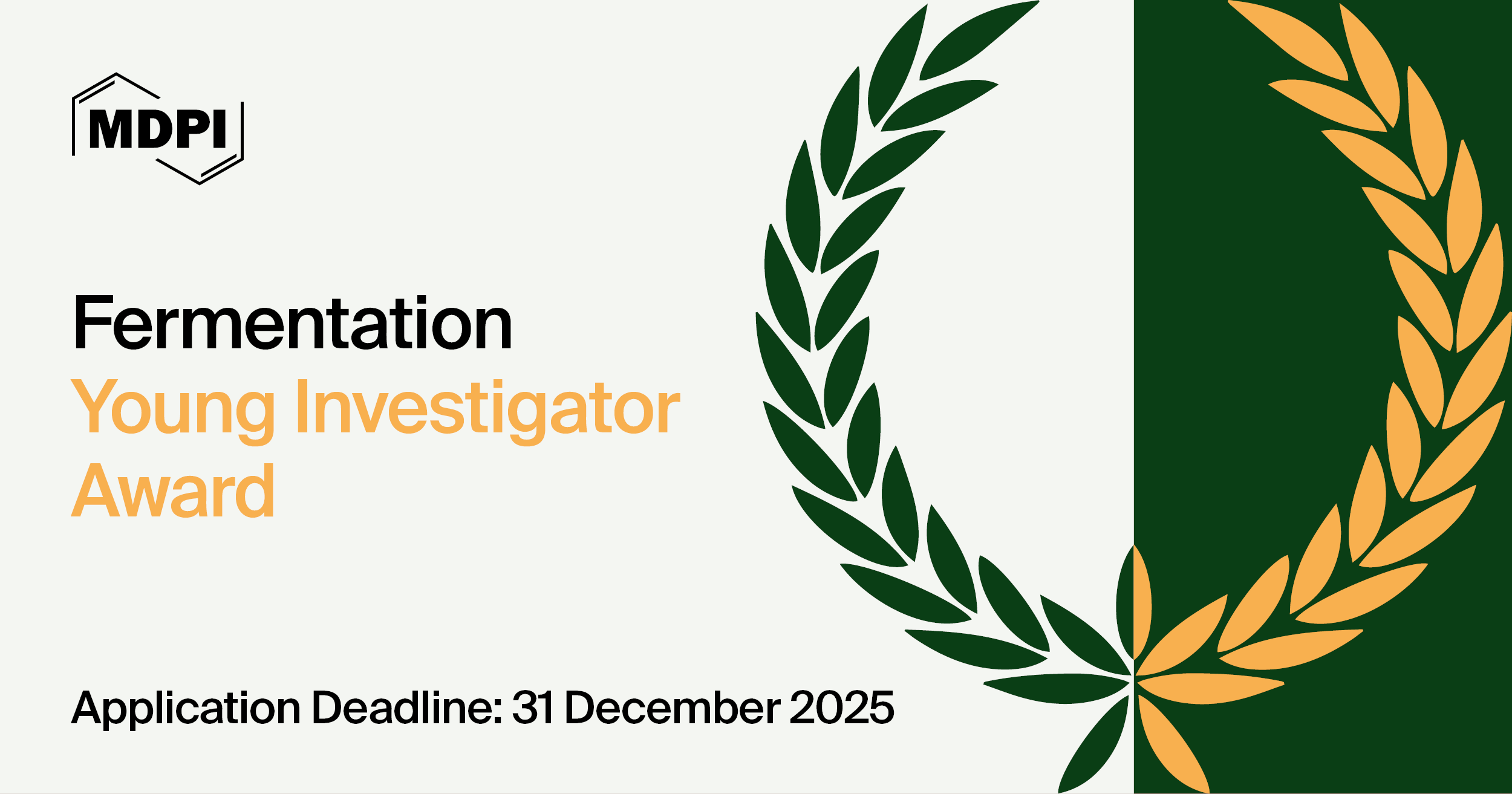Topical Advisory Panel applications are now closed. Please contact the Editorial Office with any queries.
Journal Description
Fermentation
Fermentation
is an international, peer-reviewed, open access journal on fermentation process and technology published monthly online by MDPI.
- Open Access— free for readers, with article processing charges (APC) paid by authors or their institutions.
- High Visibility: indexed within Scopus, SCIE (Web of Science), PubAg, FSTA, Inspec, CAPlus / SciFinder, and other databases.
- Journal Rank: JCR - Q2 (Biotechnology and Applied Microbiology) / CiteScore - Q1 (Plant Science)
- Rapid Publication: manuscripts are peer-reviewed and a first decision is provided to authors approximately 15.5 days after submission; acceptance to publication is undertaken in 3.9 days (median values for papers published in this journal in the first half of 2025).
- Recognition of Reviewers: reviewers who provide timely, thorough peer-review reports receive vouchers entitling them to a discount on the APC of their next publication in any MDPI journal, in appreciation of the work done.
Impact Factor:
3.3 (2024);
5-Year Impact Factor:
3.5 (2024)
Latest Articles
Genomic and Transcriptomic Characterization of a High-Yield Docosahexaenoic Acid (DHA) Mutant Schizochytrium sp. HS01
Fermentation 2025, 11(11), 631; https://doi.org/10.3390/fermentation11110631 - 5 Nov 2025
Abstract
Docosahexaenoic acid (DHA), an omega-3 polyunsaturated fatty acid essential for human health, is primarily produced at scale using Schizochytrium sp. Mutagenesis-based strain improvement has increased DHA yields, but the genetic and metabolic mechanisms underlying high productivity remain poorly understood. Here, we conducted the
[...] Read more.
Docosahexaenoic acid (DHA), an omega-3 polyunsaturated fatty acid essential for human health, is primarily produced at scale using Schizochytrium sp. Mutagenesis-based strain improvement has increased DHA yields, but the genetic and metabolic mechanisms underlying high productivity remain poorly understood. Here, we conducted the comparative whole-genome sequencing and transcriptomic profiling of a high-DHA-yielding mutant strain (HS01) and its parental strain (GS00). The GS00 genome assembly spans 62.4 Mb and encodes 14,886 predicted genes. Functional annotation highlighted pathways involved in central metabolism, saturated fatty acid (SFA) synthesis, and polyunsaturated fatty acid (PUFA)/DHA biosynthesis. Comparative genomics identified 40 insertions/deletions and 396 single-nucleotide polymorphisms between HS01 and GS00, including mutations in the coding and regulatory regions of key metabolic genes. Transcriptomic analysis revealed extensive metabolic reprogramming in HS01, including the upregulation of glycolysis and tricarboxylic acid (TCA) cycle genes, along with a distinct fatty acid profile and the altered expression of fatty acid metabolism genes compared with GS00. Collectively, the integrated genomic and transcriptomic analyses not only pinpointed specific mutations potentially associated with the HS01 high-DHA phenotype but also revealed substantial transcriptional and metabolic remodeling, providing valuable insights into the mechanisms that drive enhanced DHA biosynthesis.
Full article
(This article belongs to the Special Issue 10th Anniversary of Fermentation: Feature Papers in Section “Microbial Metabolism, Physiology & Genetics”)
►
Show Figures
Open AccessArticle
Comparative Evaluation of Ionophores on the In Vitro Fermentation Dynamics of Wheat Silage Using a Gas Production System
by
Ana Luiza de Freitas dos Santos, Mateus Henrique Signor, Gabrielly Chechi Giraldi, Isadora Zago, Rafael Vinicius Pansera Lago, Idacir Antonio Santin Junior, Viviane Dalla Rosa, Amanda Scussiato, Marcos Inácio Marcondes, Jacir Dal Magro, Pedro Del Bianco Benedeti and Ana Luiza Bachmann Schogor
Fermentation 2025, 11(11), 630; https://doi.org/10.3390/fermentation11110630 - 5 Nov 2025
Abstract
Wheat silage is an underexplored forage in ruminant nutrition that offers potential benefits due to its high crude protein content and capacity to mitigate methane emissions. However, little is known about its interaction with feed additives. This study evaluated the effects of monensin
[...] Read more.
Wheat silage is an underexplored forage in ruminant nutrition that offers potential benefits due to its high crude protein content and capacity to mitigate methane emissions. However, little is known about its interaction with feed additives. This study evaluated the effects of monensin (25 ppm) and narasin (13 ppm) on the in vitro ruminal fermentation of wheat silage using a randomized complete block design with three treatments and seven replicates per incubation. Gas production was recorded over 48 h, and fermentation parameters, including pH, in vitro organic matter digestibility (IVOMD), metabolizable energy (ME), ammonia nitrogen (NH3-N), and volatile fatty acid (VFA) profiles, were determined. Both ionophores maintained a higher ruminal pH compared to the control (p < 0.01) and reduced total gas production, ME, and IVOMD (p < 0.01), without significant differences between monensin and narasin. No effects were observed on total VFA production, acetate-to-propionate ratio, or ammonia concentration, although isobutyrate was reduced (p < 0.01). Fermentation kinetics revealed decreased gas production and digestion rates in the slowly degradable fraction, particularly with monensin. In conclusion, ionophores modulated fermentation but did not improve digestibility or energy availability, suggesting limited nutritional benefits when wheat silage is used as the sole forage source.
Full article
(This article belongs to the Special Issue Research Progress of Rumen Fermentation)
►▼
Show Figures
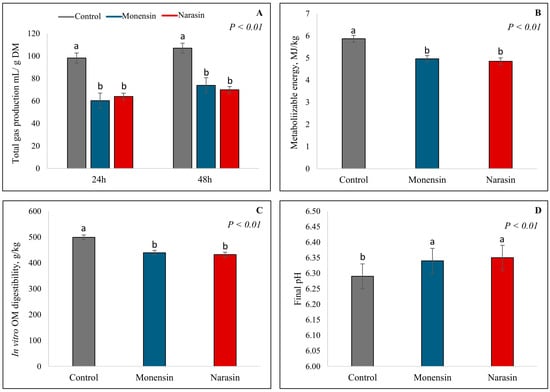
Figure 1
Open AccessArticle
Optimization of Fermentation Parameters and Medium Composition for Producing Prodiginines from Marine Bacterium Spartinivicinus ruber MCCC 1K03745T
by
Xiaosi Lin, Peiyun Wu, Yajue Huang and Congjie Dai
Fermentation 2025, 11(11), 629; https://doi.org/10.3390/fermentation11110629 - 4 Nov 2025
Abstract
Cycloheptylprodigiosin exhibits potent anticancer activity through a unique mechanism involving the induction of severe Golgi stress, a previously unrecognized cell death pathway. To increase the prodiginine production from the marine bacterium Spartinivicinus ruber MCCC 1K03745T, we investigated key fermentation parameters, including
[...] Read more.
Cycloheptylprodigiosin exhibits potent anticancer activity through a unique mechanism involving the induction of severe Golgi stress, a previously unrecognized cell death pathway. To increase the prodiginine production from the marine bacterium Spartinivicinus ruber MCCC 1K03745T, we investigated key fermentation parameters, including incubation time and initial medium pH. The culture medium composition was then sequentially optimized by single-factor experiments, a full factorial design, and an orthogonal design. Our results showed that the optimal incubation time was 30 h post inoculation, while initial pH had no effect on prodiginine production within the range of pH 6.0 to 8.0. By orthogonal design, the optimal medium was determined as follows: peptone 11 g/L, yeast extract 1 g/L, soybean oil 5 mL/L and MgCl2·6H2O 3 g/L in seawater. Verification experiments showed that prodiginine concentration under the optimized conditions reached 14.64 mg/L, representing 2.62 times the concentration obtained in basal Marine Broth 2216. These findings provide a basis for the cost-effective production of prodiginines from S. ruber MCCC 1K03745T for potential pharmaceutical applications.
Full article
(This article belongs to the Section Fermentation Process Design)
►▼
Show Figures

Graphical abstract
Open AccessArticle
Saturnispora diversa: A New Acid-Reducing Yeast in Co-Fermentation with Saccharomyces cerevisiae to Optimize Flavor Balance in Blueberry Wine
by
Qian Wang, Huiyan Jiang, Liping Weng, Jing Qiu, Shuai Yue, Junbo Liu and Ligen Zou
Fermentation 2025, 11(11), 628; https://doi.org/10.3390/fermentation11110628 - 3 Nov 2025
Abstract
The high acidity of blueberry wine remains a critical factor limiting consumer acceptance. In this study, an acid-reducing yeast strain isolated from naturally fermented blueberry juice was co-fermented with Saccharomyces cerevisiae to evaluate its effects on physicochemical properties and the profile of volatile
[...] Read more.
The high acidity of blueberry wine remains a critical factor limiting consumer acceptance. In this study, an acid-reducing yeast strain isolated from naturally fermented blueberry juice was co-fermented with Saccharomyces cerevisiae to evaluate its effects on physicochemical properties and the profile of volatile compounds, characterized using gas chromatography–mass spectrometry (GC-MS) and gas chromatography-ion mobility spectrometry (GC-IMS). Results demonstrated that a yeast strain isolated from 484 candidate strains achieved a citric acid reduction rate of 92.04 ± 2.76% and was identified as Saturnispora diversa. This strain has been deposited in the China General Microbiological Culture Collection Center (CGMCC) with the accession number CGMCC No. 28902. Co-fermentation with Saccharomyces cerevisiae significantly reduced the acidity of blueberry wine, while exerting no significant impact on other physicochemical properties. The combined GC-MS and GC-IMS approach provided comprehensive volatile profiling, revealing that Saccharomyces cerevisiae fermentation preferentially enhanced ester biosynthesis, while the acid-reducing co-fermentation system optimized flavor balance. Collectively, the synergistic use of acid-reducing and Saccharomyces cerevisiae offers a promising production strategy for premium blueberry wine, effectively mitigating excessive acidity to improve palatability while preserving aroma integrity.
Full article
(This article belongs to the Special Issue Science and Technology of Winemaking)
►▼
Show Figures
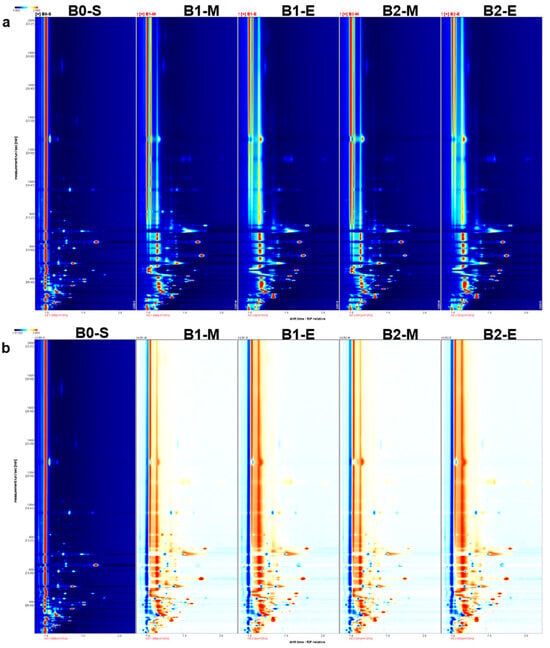
Figure 1
Open AccessArticle
Integrated Biorefinery of Brewer’s Spent Grain for Second-Generation Ethanol, Mycoprotein, and Bioactive Vinasse Production
by
Sara Saldarriaga-Hernandez, José García-Béjar, Anahid Esparza-Vasquez, Rosa Leonor González-Díaz, Eduardo Joel López-Torres, Julio César López-Velázquez, Lorena Amaya-Delgado, Tomás García-Cayuela, Hemant Choudhary, Blake A. Simmons and Danay Carrillo-Nieves
Fermentation 2025, 11(11), 627; https://doi.org/10.3390/fermentation11110627 - 3 Nov 2025
Abstract
Brewer’s spent grain (BSG), the main lignocellulosic by-product of the beer industry, represents an abundant yet underutilized resource with high potential for valorization. This study presents an integrated biorefinery approach to convert BSG into second-generation (2G) ethanol, bioactive vinasse for plant growth promotion,
[...] Read more.
Brewer’s spent grain (BSG), the main lignocellulosic by-product of the beer industry, represents an abundant yet underutilized resource with high potential for valorization. This study presents an integrated biorefinery approach to convert BSG into second-generation (2G) ethanol, bioactive vinasse for plant growth promotion, and fungal biomass as a potential mycoprotein source. The biomass was first subjected to biological delignification using the white-rot fungus Ganoderma lucidum, after which two valorization routes were explored: (i) evaluation of the fungal biomass as a mycoprotein candidate and (ii) alcoholic fermentation for ethanol production. For the latter, three pretreatment strategies were assessed (diluted sulfuric acid and two deep eutectic solvents (DESs) based on choline chloride combined with either glycerol or lactic acid) followed by a one-pot enzymatic saccharification and fermentation using Kluyveromyces marxianus SLP1. The highest ethanol yield on substrate (YP/S) was achieved with [Ch]Cl:lactic acid pretreatment (0.46 g/g, 89.32% of theoretical). Vinasse, recovered after distillation, was characterized for organic acid content and tested on Solanum lycopersicum seed germination, showing promising biostimulant activity. Overall, this work highlights the potential of BSG as a sustainable feedstock within circular economy models, enabling the production of multiple bio-based products from a single residue.
Full article
(This article belongs to the Special Issue Biotechnological Strategies for Agro-Industrial Food Waste Management)
►▼
Show Figures

Graphical abstract
Open AccessArticle
Valorization of Artichoke Wastes via Ozonation Pretreatment and Enzyme Fibrolytic Supplementation: Effect on Nutritional Composition, Ruminal Fermentation and Degradability
by
Khalil Abid
Fermentation 2025, 11(11), 626; https://doi.org/10.3390/fermentation11110626 - 2 Nov 2025
Abstract
The increasing demand for sustainable ruminant feeds has driven interest in the valorization of agro-industrial wastes. Artichoke wastes are attractive in the Mediterranean region due to their availability and richness in protein (CP) and fiber (NDF), but their high lignin (ADL) and tannin
[...] Read more.
The increasing demand for sustainable ruminant feeds has driven interest in the valorization of agro-industrial wastes. Artichoke wastes are attractive in the Mediterranean region due to their availability and richness in protein (CP) and fiber (NDF), but their high lignin (ADL) and tannin contents limit their nutritional value. This experiment was conducted using a completely randomized design with four treatments—control, ozone (O3), exogenous fibrolytic enzyme (EFE), and O3 + EFE—tested over six runs, each including three replicates per treatment. The study evaluated the effects of ozone (O3) and exogenous fibrolytic enzyme (EFE) treatments, applied alone or in combination, on artichoke waste chemical composition, ruminal fermentation, microbial populations, enzyme activity, and degradability. Ozone pretreatment significantly reduced fiber fractions (NDF −10%, ADF −7%), ADL (−16%), and condensed tannins (−64%), while increasing CP (+13%) and non-fibrous carbohydrates (NFC +38%). These modifications enhanced ruminal bacterial populations (+29%) and fibrolytic enzyme activities (xylanase +21%, endoglucanase +19%, exoglucanase +10%), resulting in higher dry matter degradability (DMD +11%), fiber degradability (NDFD +14%), total volatile fatty acids (VFAs +13%), and a lower acetate-to-propionate ratio. EFEs alone showed negligible effects; however, when applied after ozone, further improvements were observed in NFCs (+21%), bacterial populations (+21%), enzyme activities (xylanase +11%, endoglucanase +10%), DMD (+8%), NDFD (+7%), and VFAs (+6%) compared to ozone alone. These findings demonstrate that O3 pretreatment facilitates the enzymatic hydrolysis of lignocellulosic structures and enhances the effectiveness of EFEs, offering a sustainable and eco-efficient strategy for the bioconversion of artichoke wastes into high-value feed for ruminants, contributing to resource efficiency and circular bioeconomy development in livestock systems.
Full article
(This article belongs to the Special Issue Valorisation of Agro-Industrial By-Products Through Fermentation or Eco-Friendly Techniques)
►▼
Show Figures
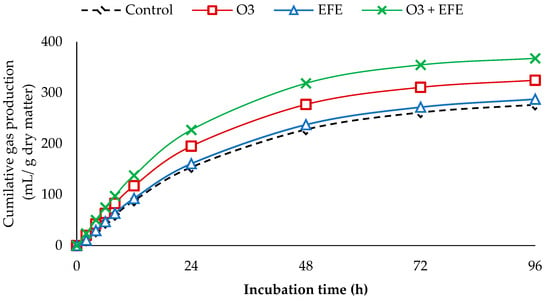
Figure 1
Open AccessArticle
Bio-Enhancement of Phenolic Content and Antioxidant Capacity of Coffee (Coffea arabica L.) Cherry Husks by Solid-State Fermentation with Trichoderma Fungi
by
Punyawatt Pintathong, Narit Thaochan, Benjarat Suwannawong, Sarita Sangthong and Phanuphong Chaiwut
Fermentation 2025, 11(11), 625; https://doi.org/10.3390/fermentation11110625 - 1 Nov 2025
Abstract
Fermentation possesses intriguing and promising potential as a bioprocess for enhancing and/or transforming bioactive compounds derived from agricultural processing by-products. This study aimed to enhance the phenolic compounds and antioxidant properties of coffee cherry husks through the sustainable methodology of solid-state fermentation (SSF)
[...] Read more.
Fermentation possesses intriguing and promising potential as a bioprocess for enhancing and/or transforming bioactive compounds derived from agricultural processing by-products. This study aimed to enhance the phenolic compounds and antioxidant properties of coffee cherry husks through the sustainable methodology of solid-state fermentation (SSF) using various Trichoderma fungi, specifically Trichoderma asperellum CB-Pin-01 and two Trichoderma isolates (NTY211 and PSUT001). The coffee cherry husks underwent fermentation at a controlled temperature of 28 ± 1 °C over a duration of 7 days. Both fermented and unfermented extracts, prepared using different solvents (water, ethanol, and acetone), were systematically evaluated concerning total phenolic content (TPC), total flavonoid content (TFC), and antioxidant capacities measured via DPPH and ABTS radical scavenging assays, as well as ferric reducing antioxidant power (FRAP). The findings indicated that SSF involving Trichoderma fungi significantly augmented the phenolic content and antioxidant activities in comparison to the unfermented samples (p < 0.05). Notably, the acetonic extract obtained from fermentation with the isolate NTY211 exhibited the highest contents of phenolic (191.48 ± 3.94 mg GAE/g extract) and flavonoid (106.61 ± 3.09 mg QE/g extract). The identification of phenolic compounds by UHPLC-QqQ-MS/MS analysis revealed a predominant increase in chlorogenic acid and quercetin through SSF. Consequently, SSF utilizing Trichoderma fungi may represent a viable strategy for enhancing the value of coffee cherry husks, rendering them into bioactive ingredients with potential applications in the cosmetic and food industries.
Full article
(This article belongs to the Special Issue Application and Research of Solid State Fermentation, 2nd Edition)
►▼
Show Figures

Graphical abstract
Open AccessArticle
In Vitro Digestibility Methodology Modification to Account for Horse Foregut Digestion Using Diets with Increased Soluble Carbohydrates and Protein
by
Ryon W. Springer, Trinette N. Jones, Michaela R. Plowman, Nichole M. Cherry, Walter F. Owsley, Tryon A. Wickersham and James P. Muir
Fermentation 2025, 11(11), 624; https://doi.org/10.3390/fermentation11110624 - 1 Nov 2025
Abstract
Ruminant in vitro methodologies use washing with neutral detergent solution (NDS) after incubation to mimic ruminant digestion, which is physiologically different compared to that of horses. Our objectives were to determine if washing feed samples with NDS before in vitro fermentation (PRE) would
[...] Read more.
Ruminant in vitro methodologies use washing with neutral detergent solution (NDS) after incubation to mimic ruminant digestion, which is physiologically different compared to that of horses. Our objectives were to determine if washing feed samples with NDS before in vitro fermentation (PRE) would suppress fiber digestion versus a post-incubation wash (POST), and to compare in vitro digestibility of forage-based feed mixtures with added soluble carbohydrates (CARB), soluble protein (PROT), or soluble carbohydrates and soluble protein (C + P) to only-forage samples (CONT). Dried, ground feed mixtures sealed in ANKOM filter bags were placed in DaisyII incubators for 48 h in a split–split-plot batch culture design. Digestibility was determined as in vitro neutral detergent fiber digestibility (IVNDFD), in vitro acid detergent fiber digestibility (IVADFD), in vitro hemicellulose digestibility (IVHD), and in vitro true digestibility (IVTD). The PRE treatment decreased IVHD for CARB versus POST (p = 0.007). Pooling all mixtures, PRE decreased IVTD (p = 0.001), IVADFD (p = 0.036), and IVHD (p = 0.001) and tended to decrease IVNDFD (p = 0.072). The CARB mixture increased IVTD versus all other mixtures (p < 0.001). Pre-washing with NDS suppressed in vitro fermentation by removing soluble carbohydrates. Without removal of soluble carbohydrates to mimic in vivo digestion, fiber digestibility is likely overestimated.
Full article
(This article belongs to the Special Issue In Vitro Fermentation, Fourth Edition)
►▼
Show Figures
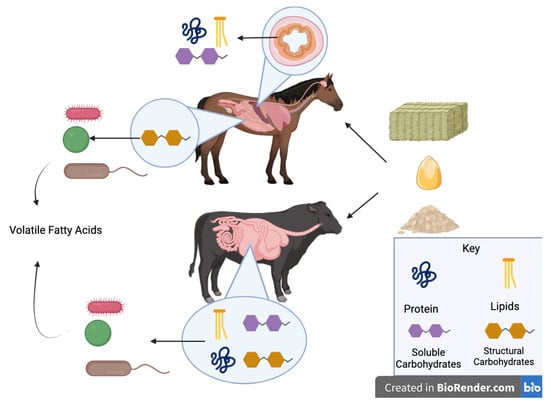
Figure 1
Open AccessArticle
Sustainable Hydrogen Production via Dark Fermentation of Protein- and Lipid-Rich Municipal Organic Waste: Digestate Reuse and Ammonia Mitigation Strategies
by
Gaogane Jephtah Gaogane, Patrick Sekoai and Cristina Trois
Fermentation 2025, 11(11), 623; https://doi.org/10.3390/fermentation11110623 - 1 Nov 2025
Abstract
A major limitation to the conversion of OFMSW via anaerobic fermentation is the high concentration of animal-derived wastes, which can inhibit the process due to ammonia accumulation. This study assessed the reusability of ammonia-loaded, dark fermentation (DF) liquor at two reuse cycles, derived
[...] Read more.
A major limitation to the conversion of OFMSW via anaerobic fermentation is the high concentration of animal-derived wastes, which can inhibit the process due to ammonia accumulation. This study assessed the reusability of ammonia-loaded, dark fermentation (DF) liquor at two reuse cycles, derived from the fermentation of protein/lipid-rich substrates. Mitigation strategies such as ammonia stripping and biochar addition were evaluated against unstripped and unrecycled bioreactors. The initial slurry was generated from DF of substrates with varying compositions of proteins and lipids, which yielded characteristic results, and subsequently applied under four operational variations namely biochar addition, ammonia stripping, and unstripped and unrecycled bioreactors. Biochar addition effectively mitigated against ammonia accumulation across both cycles. In the first cycle, it produced the highest hydrogen yield, outperforming stripped and unstripped bioreactors by 53.8%, and 76.9%, respectively. In cycle 2, biochar further outperformed stripped and unstripped bioreactors by 44.1% and 42.4%. Despite a higher ammonia exposure, microbial consortia in the unstripped bioreactors acclimatised more effectively than stripped bioreactors in the second cycle. The main limiting factor was not conversion efficiency but electron diversion due to competing metabolic pathways. This study provides new insights into biohydrogen enrichment from animal-derived wastes, while emphasising mitigation strategies amid freshwater savings.
Full article
(This article belongs to the Topic Biomass: Advanced Strategies for Renewable Chemicals and Energy Production)
►▼
Show Figures
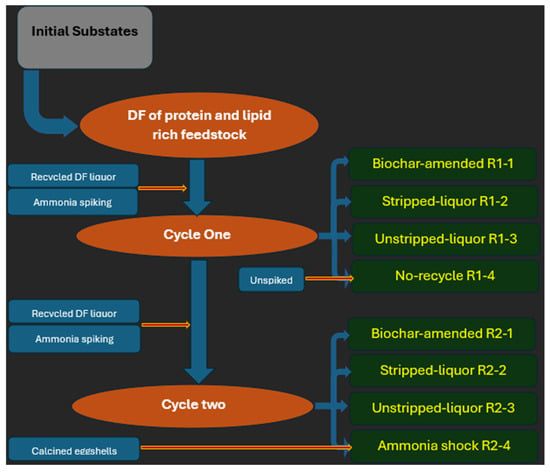
Figure 1
Open AccessArticle
Improving Haemophilus influenzae Type b Polysaccharide Productivity Through Continuous Culture for Pentavalent Vaccine Manufacturing
by
Lucas Santos Solidade, Lucas Dias Vieira and Mickie Takagi
Fermentation 2025, 11(11), 622; https://doi.org/10.3390/fermentation11110622 - 31 Oct 2025
Abstract
Haemophilus influenzae type b (Hib) is a Gram-negative bacterium that causes severe infections in children under five, especially in developing countries. Although vaccination using capsular polysaccharide by Hib (linear polymer 5-D-ribitol-(1→1)-β-D-ribose-3-phosphate) conjugated to tetanus toxoid is effective, its production is complex and costly.
[...] Read more.
Haemophilus influenzae type b (Hib) is a Gram-negative bacterium that causes severe infections in children under five, especially in developing countries. Although vaccination using capsular polysaccharide by Hib (linear polymer 5-D-ribitol-(1→1)-β-D-ribose-3-phosphate) conjugated to tetanus toxoid is effective, its production is complex and costly. This study aimed to develop a continuous production process for PRP to increase productivity, reduce batch numbers, and simplify manufacturing. Using a 1 L bioreactor, five dilution rates (0.13 to 0.32 h−1) were tested, with the best performance observed at 0.23 h−1, reaching a productivity of 167 mgL−1·h−1. Under optimized conditions, parameters such as free and immobilized PRP, glucose consumption, acetate formation, and biomass were monitored. The process yielded 874 mgL−1 of PRP after 74.4 h, with 78% in the free form and a final productivity of 165 mgL−1·h−1, approximately six times higher than batch processes and twice as high as fed-batch processes. The continuous process proved more efficient and required less infrastructure to meet production demands. However, further optimization is needed to enhance product quality and assess overall feasibility.
Full article
(This article belongs to the Special Issue 10th Anniversary of Fermentation: Feature Papers in Section "Industrial Fermentation")
►▼
Show Figures

Figure 1
Open AccessArticle
The Effect of New Inhibitors on Malolactic Fermentation of Wines
by
Karolina Kostelnikova, Bozena Prusova, Josef Licek, Jiri Sochor and Mojmir Baron
Fermentation 2025, 11(11), 621; https://doi.org/10.3390/fermentation11110621 - 31 Oct 2025
Abstract
This study deals with the influence of various oenological preparations on malolactic fermentation. The influence of chitosan, fumaric acid, a tannin-based (Estaan) oenological preparation and medium-chain fatty acids (MCFAs) was investigated, along with a new preparation based on a combination of selected hydroxycinnamic
[...] Read more.
This study deals with the influence of various oenological preparations on malolactic fermentation. The influence of chitosan, fumaric acid, a tannin-based (Estaan) oenological preparation and medium-chain fatty acids (MCFAs) was investigated, along with a new preparation based on a combination of selected hydroxycinnamic acids and MCFAs. Growth curves were obtained using Oenococcus oeni, Lactobacillus brevis and Lactobacillus plantarum bacteria. Experimental work was also carried out on microsamples of wine, where individual inhibitors were added to wine inoculated with O. oeni culture and an HPLC analysis was performed to measure malic acid levels. Fumaric acid had the strongest inhibitory effect on L. plantarum at a dose of 2.5 g∙L−1, while chitosan had the strongest effect on O. oeni at a dose of 2.5 mg∙L−1. P-coumaric acid in combination with MCFAs (0.4 g∙L−1 of p-coumaric acid + 10 mg∙L−1 MCFAs) and Mix (0.4 g∙L−1 of p-coumaric acid + 0.4 g∙L−1 of ferulic acid + 10 mg∙L−1 MCFA) had the strongest inhibitory effects on O. oeni and L. brevis. Finally, MCFAs had the strongest inhibitory effect on L. brevis at a dose of 1000 mg∙L−1, and Estaan had the strongest effect on L. plantarum at a dose of 25 g∙L−1.
Full article
(This article belongs to the Special Issue Fermentation and Biotechnology in Wine Making)
►▼
Show Figures

Figure 1
Open AccessArticle
Production of Bio-Improved Butter with Lactic Acid Bacteria Isolated from Traditional Cheese Matrix and Eye Fluid
by
Gokce Keser and Tulay Ozcan
Fermentation 2025, 11(11), 620; https://doi.org/10.3390/fermentation11110620 - 31 Oct 2025
Abstract
This study aimed to investigate the effects of Levilactobacillus brevis, Lacticaseibacillus paracasei, and Lacticaseibacillus rhamnosus strains isolated from Mihalic cheese, also known as “weeping cheese”, on fermentation kinetics, microbial viability, and textural and aromatic properties of the butter matrix. The effects
[...] Read more.
This study aimed to investigate the effects of Levilactobacillus brevis, Lacticaseibacillus paracasei, and Lacticaseibacillus rhamnosus strains isolated from Mihalic cheese, also known as “weeping cheese”, on fermentation kinetics, microbial viability, and textural and aromatic properties of the butter matrix. The effects of the isolates were determined on acidification kinetics (Vmax, Tvmax, pHvmax), viability proportion index (VPI), textural parameters (firmness, work of shear, stickiness, work of adhesion), and volatile aroma compounds (GC-MS) formation. This study found that the BLR sample containing Lacticaseibacillus rhamnosus maintained its limited viability under acidic stress conditions despite its high fermentation rate and low pHvmax values. The BLP sample containing Lacticaseibacillus paracasei exhibited high viability due to its low acidification rate and limited pH change. Determining the chemical classes to which the aroma compounds in the BLP sample belonged revealed a composition rich in fatty acids. The BLB sample containing Levilactobacillus brevis produced a high ΔpH value and an aroma profile rich in aldehyde compounds. Examination of the macro-structural properties of the butter samples revealed that the sample containing Lacticaseibacillus rhamnosus, similar to the control sample (BMC), was more compact and rigid during storage. In contrast, samples containing Lacticaseibacillus paracasei and Levilactobacillus brevis had a softer/spreadable texture. These findings demonstrate the potential of lactic acid bacteria isolates from the traditional Mihalic cheese microbiota as biological catalysts for the development/improvement of texture, aroma, and sensory quality in high-fat dairy products and for the industrial production of products modified to meet consumer preferences.
Full article
(This article belongs to the Special Issue Fermented Dairy Products: From Artisanal Production to Functional Products and Beyond)
►▼
Show Figures
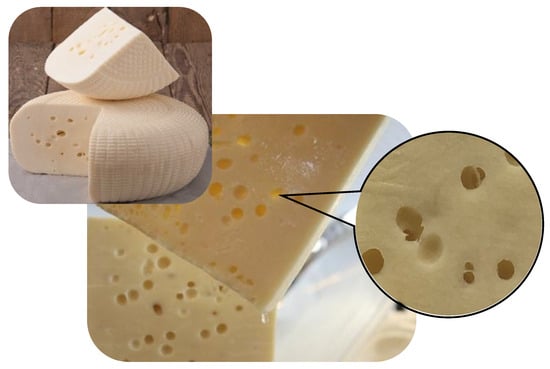
Figure 1
Open AccessArticle
A Strategy for Sustainable Production of Isoflavones from Black Soybean Okara via Solid-State Co-Fermentation
by
Yi-Chung Lai, Bang-Yuan Chen, Jung-Feng Hsieh, Chien-Cheng Yeh, Cheng Huang, Meng-I Kuo and Chun-Ping Lu
Fermentation 2025, 11(11), 619; https://doi.org/10.3390/fermentation11110619 - 29 Oct 2025
Abstract
Okara, the soybean residue generated during soymilk and tofu production, is nutrient-rich but underutilized due to its high moisture content and perishability. This study established a sustainable solid-state co-fermentation strategy using Rhizopus oligosporus (BCRC 31631) and Yarrowia lipolytica (BCRC 21252) to enhance the
[...] Read more.
Okara, the soybean residue generated during soymilk and tofu production, is nutrient-rich but underutilized due to its high moisture content and perishability. This study established a sustainable solid-state co-fermentation strategy using Rhizopus oligosporus (BCRC 31631) and Yarrowia lipolytica (BCRC 21252) to enhance the bioactive value of black soybean okara from two Taiwanese cultivars—Tainan No. 3 (TN.3) and Tainan No. 5 (TN.5). Co-fermentation markedly enhanced β-glucosidase activity, reaching 0.75 U/g DW at 30 °C after 48 h in TN.3 and 0.68 U/g DW after 24 h in TN.5, approximately 3.5-fold higher than single-strain fermentation. Near-complete (97–100%) hydrolysis of daidzin, glycitin, and genistin occurred within 24–48 h, producing 672.9 µg/g DM of total aglycone-type isoflavones—an ~11-fold increase compared with unfermented okara (61.5 µg/g DM), where most isoflavones (~740 µg/g DM) remained glycosylated. Varietal structure affected conversion efficiency: TN.3 exhibited stronger enzymatic responsiveness and higher aglycone yield, whereas TN.5 showed faster but less extensive transformation. The process also revealed a bioactive–pigment trade-off, as enhanced isoflavone activation coincided with anthocyanin degradation. These findings demonstrate that ambient-temperature solid-state co-fermentation effectively boosts β-glucosidase activity and isoflavone bioconversion, transforming low-value okara into a high-value functional ingredient consistent with circular bioeconomy and sustainable food system goals.
Full article
(This article belongs to the Special Issue Exploring Fermentation Strategies for the Valorization of Food By-Products and Their Bioactive Potential)
►▼
Show Figures
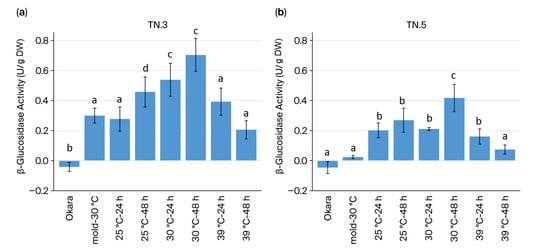
Figure 1
Open AccessArticle
Effects of Metschnikowia pulcherrima as a Substitute for SO2 in Pre-Fermentative Cold Maceration on Muscat Red Wine
by
Hejing Yan, Yinzhen Wang, Zhuoyuan Li, Yunkai Qian, Lisha Luo, Fei Li, Yang Yang, Qiaomin Yin, Xiqing Guo, Wenqi Shi, Jiefang Zhou and Pengbao Shi
Fermentation 2025, 11(11), 618; https://doi.org/10.3390/fermentation11110618 - 29 Oct 2025
Abstract
In response to increasing safety concerns regarding the use of sulfur dioxide (SO2) in winemaking, this study investigates the efficacy of Metschnikowia pulcherrima-mediated cold maceration (Mp-CM) as a potential alternative to SO2 at industrial temperatures (10–15 °C). The analysis
[...] Read more.
In response to increasing safety concerns regarding the use of sulfur dioxide (SO2) in winemaking, this study investigates the efficacy of Metschnikowia pulcherrima-mediated cold maceration (Mp-CM) as a potential alternative to SO2 at industrial temperatures (10–15 °C). The analysis focused on the content of different phenolics, as well as wine color properties and aroma compounds. These parameters were compared against those obtained from CM with SO2 (SO2-CM). This study introduces and compares the phenolics, wine color properties, and volatile compounds produced by three Metschnikowia pulcherrima strains (Mp0519, Mp0516, and Mp0520 were previously isolated from Muscat Hamburg grapes in the Jieshi mountain region), revealing that the effectiveness of the treatments varied depending on the temperature and strain. At 10 °C, Mp-CM showed significantly lower phenolic (−19.23%) and flavonoid (−41.13%) content compared to SO2-CM but exhibited markedly higher anthocyanin and terpene content (+133.11% and +12.61%, respectively), with similar tannin levels. Conversely, at 15 °C, Mp-CM outperformed SO2-CM in several key metrics, including total phenolics (+17.32%), flavonoids (+83.45%), tannins (+17.05%), and anthocyanins (+54.08%), and demonstrated a significantly enhanced floral/fruity aroma intensity (+160.72%). Furthermore, Mp0520 exhibited peak levels of phenolics and esters at 10 °C, while Mp0519 reached its highest terpene level at 10 °C and total volatile at 15 °C. Notably, Mp-CM consistently displayed specific characteristics regardless of the maceration temperature, including a reduction in total volatile compounds, a suppression of ester formation, an enhancement of anthocyanin content, and an improvement of the wine’s floral aroma, with strain-specific variations observed across all evaluated parameters. This study illustrates that the Mp-CM provides distinct advantages in extracting key components from grape skins, and it has the potential to enhance wine color attributes. This positions Mp as a promising SO2 alternative for CM, contingent on strain selection and process optimization.
Full article
(This article belongs to the Section Fermentation for Food and Beverages)
►▼
Show Figures
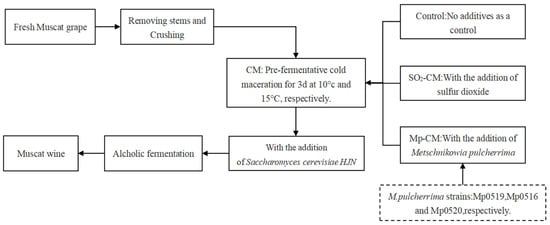
Figure 1
Open AccessArticle
Combined Microbiological Tools to Assess the Suitability of Lactic Acid Bacteria Cell-Free Supernatant as a Bio-Preservative in Ready-to-Eat Orange Against Wild Staphylococcus aureus and Bacillus cereus Isolates
by
Nunziatina Russo, Paola Foti, Irene M. Zingale, Cinzia Caggia, Cinzia L. Randazzo and Flora V. Romeo
Fermentation 2025, 11(11), 617; https://doi.org/10.3390/fermentation11110617 - 29 Oct 2025
Abstract
The increased consumption of ready-to-eat fruits highlights the need for better control of microbial growth during their shelf life. Among bacteria, Staphylococcus aureus and Bacillus cereus are proposed as target species for testing alternative preservative methods. This study aimed to evaluate the antimicrobial
[...] Read more.
The increased consumption of ready-to-eat fruits highlights the need for better control of microbial growth during their shelf life. Among bacteria, Staphylococcus aureus and Bacillus cereus are proposed as target species for testing alternative preservative methods. This study aimed to evaluate the antimicrobial effect of the cell-free supernatant (CFS) from LAB strains previously isolated from ready-to-eat fruits, used as a mixed solution, against both reference and native S. aureus and B. cereus, which were isolated from commercial ready-to-eat fruits. A specific challenge test was conducted on minimally processed orange slices, assessing the effect of CFS on the intentionally inoculated target bacteria using a culturing and quantitative PCR (qPCR) approach. Microbiological counts varied widely among samples, indicating an initial microbiota below legislative limits, mainly comprising total mesophilic and psychrophilic bacteria, which increased significantly after 8 days of storage. Additionally, our results demonstrated the food matrix’s capacity to support the growth of both target species, with the tested CFS mainly effective in reducing the growth of reference strains. The results of the physicochemical analyses showed that during refrigerated storage, the orange slices underwent changes in pH, color, and texture, mostly in S. aureus strain-inoculated samples, negatively affecting texture at mid-storage time. The study also underscored the importance of combining plate counting with qPCR methods to detect B. cereus, as it can be risky even at low levels.
Full article
(This article belongs to the Section Fermentation for Food and Beverages)
►▼
Show Figures
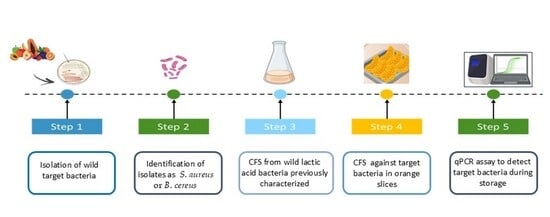
Graphical abstract
Open AccessArticle
Synergistic Evaluation of Lactobacilli on Probiotic Viability and Antioxidant Properties in Almond and Cow Milk
by
Ashwag Jaman Al Zahrani, Amal Bakr Shori and Khadijah A. Altammar
Fermentation 2025, 11(11), 616; https://doi.org/10.3390/fermentation11110616 - 29 Oct 2025
Abstract
Lactobacilli are important probiotic groups recognized for their numerous health-promoting properties. This study investigated how four probiotic strains, Lacticaseibacillus rhamnosus (Lr), Lactobacillus acidophilus (La), Lactiplantibacillus plantarum (Lp), or Lacticaseibacillus casei (Lc), affected post-acidification, viable cell counts (VCCs), total phenolic and flavonoid contents (TPCs
[...] Read more.
Lactobacilli are important probiotic groups recognized for their numerous health-promoting properties. This study investigated how four probiotic strains, Lacticaseibacillus rhamnosus (Lr), Lactobacillus acidophilus (La), Lactiplantibacillus plantarum (Lp), or Lacticaseibacillus casei (Lc), affected post-acidification, viable cell counts (VCCs), total phenolic and flavonoid contents (TPCs and TFCs, respectively), and antioxidant activity of fermented almond milk (FAM) and its combination with cow’s milk (CM) at different concentrations (75:25, 50:50, and 25:75) during 1, 7, 14, and 21 days of storage. All FAM and its mixture with CM showed significantly greater (p < 0.05) post-acidification than their respective controls throughout storage. Viable cell counts in all samples ranged from 5.9 to 6.8 log cfu/mL, which were higher than those of the controls (3–4 log cfu/mL; p < 0.05). Total phenolic contents in FAM/CM (75:25 and 50:50 and 25:75)-Lc increased more than twofold (95.82 ± 0.003 and 105.71 ± 0.008 and 101.02 ± 0.071 μg GAE/mL; p < 0.05) compared to the controls (19–40 μg GAE/mL) by the end of the third week. Lbs. rhamnosus enhanced (p < 0.05) TFCs in FAM/CM (25:75) after the first day of storage. All lactobacilli strains improved the antioxidant activity in all treated samples during storage. In conclusion, the combination of fermented almond milk with cow’s milk may serve as an excellent carrier for Lbs. rhamnosus, Lab. acidophilus, Lpb. plantarum, and Lbs. casei, which exhibit antioxidant activity.
Full article
(This article belongs to the Section Probiotic Strains and Fermentation)
►▼
Show Figures
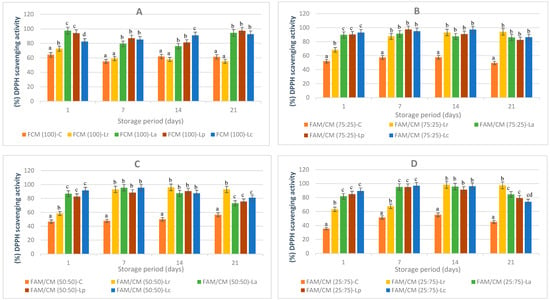
Figure 1
Open AccessArticle
Safety Assessment and the Potential of a Postbiotic Powder Formulated from a Three-Strain Fermentation of Lactobacillus salivarius AP-32, Lactobacillus paracasei ET-66, and Lactobacillus plantarum LPL28
by
Ching-Min Li, Yen-Yu Huang, Chi-Huei Lin, Jia-Hung Lin, Yi-Wei Kuo, Ko-Chiang Hsia, Shin-Yu Tsai, Yu-Fen Huang, Ching-Wei Chen and Hsieh-Hsun Ho
Fermentation 2025, 11(11), 615; https://doi.org/10.3390/fermentation11110615 - 28 Oct 2025
Abstract
This study evaluated the safety, antimicrobial activity, and upper gastrointestinal gastroprotection of a postbiotic powder derived from Lactobacillus salivarius AP-32, Lactobacillus paracasei ET-66, and Lactobacillus plantarum LPL28. Safety assessments were performed in rodent models through acute and subchronic oral toxicity tests, genotoxicity assays,
[...] Read more.
This study evaluated the safety, antimicrobial activity, and upper gastrointestinal gastroprotection of a postbiotic powder derived from Lactobacillus salivarius AP-32, Lactobacillus paracasei ET-66, and Lactobacillus plantarum LPL28. Safety assessments were performed in rodent models through acute and subchronic oral toxicity tests, genotoxicity assays, and biogenic amine analysis. No signs of toxicity were observed in either the acute (20 g/kg body weight, BW) or subchronic (3 g/kg BW) toxicity tests. Genotoxicity evaluations indicated no mutagenic activity in the Ames test (≤5000 µg/plate) and no chromosomal or micronuclear abnormalities in the spermatocyte or the peripheral blood assays (≤10 g/kg BW). Biogenic amines were undetectable in the postbiotic powder, further reinforcing its safety. The postbiotic powder showed significant direct antimicrobial activity. Additionally, it enhanced the inhibitory effects of probiotics against key upper gastrointestinal pathobionts including Streptococcus mutans, Porphyromonas gingivalis, Fusobacterium nucleatum subsp. polymorphum, and Actinobacillus actinomycetemcomitans, Helicobacter pylori. Moreover, the postbiotic powder demonstrated gastroprotective effects by promoting recovery in a hydrogen peroxide-induced gastric injury model. Based on these findings, the postbiotic powder is safe, non-toxic, and suitable for oral consumption at the tested doses, with promising antimicrobial and gastroprotective potential. Future research should explore its potential applications in health promotion and food safety.
Full article
(This article belongs to the Section Probiotic Strains and Fermentation)
►▼
Show Figures
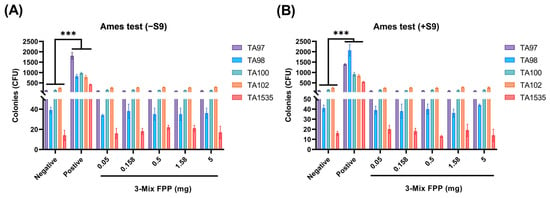
Figure 1
Open AccessArticle
Coupling Granular Activated Carbon with Waste Iron Scraps Enhances Anaerobic Digestion of PBAT Wastewater: Performance Improvement and Mechanistic Insights
by
Chunhua He, Jingjing Wen, Zhiqiang Huang, Qilong Jin, Ziyao Li, Hua Zhang, Houyun Yang, Jian Huang, Wei Wang and Hao Hu
Fermentation 2025, 11(11), 614; https://doi.org/10.3390/fermentation11110614 - 28 Oct 2025
Abstract
Poly(butylene adipate-co-terephthalate) (PBAT) wastewater, characterized by high chemical oxygen demand (COD) and acidity, poses significant challenges to anaerobic digestion (AD) due to toxicity and volatile fatty acids (VFAs) accumulation. This study coupled granular activated carbon (GAC) and waste iron scraps (WISs) to synergistically
[...] Read more.
Poly(butylene adipate-co-terephthalate) (PBAT) wastewater, characterized by high chemical oxygen demand (COD) and acidity, poses significant challenges to anaerobic digestion (AD) due to toxicity and volatile fatty acids (VFAs) accumulation. This study coupled granular activated carbon (GAC) and waste iron scraps (WISs) to synergistically enhance AD performance. Batch experiments demonstrated that, compared with the control, the GAC/WISs group achieved a COD removal efficiency of 53.18% and a methane production of 207.53 ± 5.80 mL/g COD, which were 5.48- and 12.14-fold increases, respectively, while reducing the accumulation of total VFAs by 98.48% (to 15.09 mg/L). Mechanistic analysis revealed that GAC adsorbed inhibitors and enriched methanogens, while WISs buffered pH and promoted direct interspecies electron transfer (DIET) through hydrogenotrophic methanogenesis. Metagenomic sequencing showed shifts in microbial communities, with enrichment of syntrophic bacteria (Syntrophobacter) and functional genes (pta, bcd, and pccA), indicating metabolic reprogramming. This study provided a theoretical foundation and engineering strategy for the anaerobic treatment of PBAT wastewater.
Full article
(This article belongs to the Special Issue Fermentation of Organic Waste for High-Value-Added Product Production—2nd Edition)
►▼
Show Figures

Figure 1
Open AccessReview
Emerging Technologies in Pretreatment and Hydrolysis for High-Solid-Loading Bioethanol Production from Lignocellulosic Biomass
by
Nida Arshad, Elizabeth Jayex Panakkal, Palani Bharathy Kalivarathan, Atthasit Tawai, Santi Chuetor, Wanwitoo Wanmolee, Suchata Kirdponpattara, Aiya Chantarasiri, Suchitra Rakesh, Athanasia Amanda Septevani, Ponnusami Venkatachalam and Malinee Sriariyanun
Fermentation 2025, 11(11), 613; https://doi.org/10.3390/fermentation11110613 - 28 Oct 2025
Abstract
The global reliance on fossil fuels has caused severe environmental challenges, emphasizing the urgent need for sustainable and renewable energy sources. Bioethanol production from lignocellulosic biomass has emerged as a promising alternative due to its abundance, renewability, and carbon-neutral footprint. However, its economic
[...] Read more.
The global reliance on fossil fuels has caused severe environmental challenges, emphasizing the urgent need for sustainable and renewable energy sources. Bioethanol production from lignocellulosic biomass has emerged as a promising alternative due to its abundance, renewability, and carbon-neutral footprint. However, its economic feasibility remains a major obstacle owing to high production costs, particularly those associated with low ethanol titers and the energy-intensive distillation process costs for low titers. High-solid loading processes (≥15% w/w or w/v) have demonstrated potential to overcome these limitations by minimizing water and solvent consumption, enhancing sugar concentrations, increasing ethanol titers, and lowering downstream processing cost. Nevertheless, high-solid loading also introduces operational bottlenecks, such as elevated viscosity, poor mixing, and limited mass and heat transfer, which hinder enzymatic hydrolysis efficiency. This review critically examines emerging pretreatment and enzymatic hydrolysis strategies tailored for high-solid loading conditions. It also explores techniques that improve sugar yields and conversion efficiency while addressing key technical barriers, including enzyme engineering, process integration, and optimization. By evaluating these challenges and potential mitigation strategies, this review provides actionable insights to intensify lignocellulosic ethanol production and advance the development of scalable, cost-effective biorefinery platforms.
Full article
(This article belongs to the Special Issue Lignocellulosic Biomass in Biorefinery Processes)
►▼
Show Figures

Figure 1
Open AccessArticle
In Vitro Characterization of Veillonella atypica ATCC 17744 Regarding Its Functional Properties
by
Julia Cristina Fernandes, Fernanda Weber Bordini, Anuj Kumar Chandel and Ismael Maciel de Mancilha
Fermentation 2025, 11(11), 612; https://doi.org/10.3390/fermentation11110612 - 28 Oct 2025
Abstract
The growing demand for functional foods has stimulated the search for novel microbial strains with probiotic potential, such as Veillonella atypica ATCC 17744, which has been emerging as a promising strain. Therefore, the present study aimed to perform an in vitro characterization of
[...] Read more.
The growing demand for functional foods has stimulated the search for novel microbial strains with probiotic potential, such as Veillonella atypica ATCC 17744, which has been emerging as a promising strain. Therefore, the present study aimed to perform an in vitro characterization of this strain, focusing on safety aspects and functional properties such as stress tolerance (pH, bile salts, and simulated gastrointestinal conditions), adhesion capacity (hydrophobicity, auto-aggregation, and biofilm formation), anti-pathogenic activity, antioxidant activity, antibiotic susceptibility, and enzymatic synthesis ability (gelatinase, lipase, catalase, and hemolytic activity). Stress tolerance assays revealed that this strain is sensitive to pH values below 4.00; however, no reduction in cell viability was observed at pH 3.00 in the presence of pepsin or 0.3% and 0.6% bile salts. Hydrophobicity testing showed moderate tolerance to toluene and low tolerance to xylene. Regarding biofilm synthesis, this strain formed a weak biofilm after 48 h of incubation. No anti-pathogenic activity was observed against Streptococcus aureus or Escherichia coli, and it exhibited low antioxidant activity in the DPPH assay. Regarding its safety properties, this strain was sensitive to all tested antibiotics and did not synthesize gelatinase, lipase, catalase, or exhibit β-hemolytic activity. Therefore, Veillonella atypica ATCC 17744 presents promising characteristics supporting its potential application in the development of functional food formulations, although further studies are required to ensure its safety for human consumption.
Full article
(This article belongs to the Special Issue Microbial Metabolism Focusing on Bioactive Molecules)
►▼
Show Figures
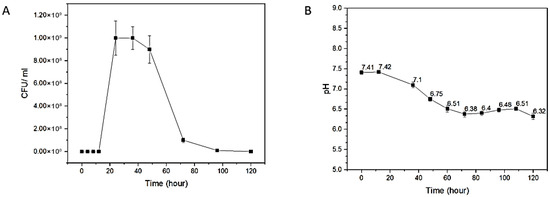
Figure 1

Journal Menu
► ▼ Journal Menu-
- Fermentation Home
- Aims & Scope
- Editorial Board
- Topical Advisory Panel
- Instructions for Authors
- Special Issues
- Topics
- Sections & Collections
- Article Processing Charge
- Indexing & Archiving
- Editor’s Choice Articles
- Most Cited & Viewed
- Journal Statistics
- Journal History
- Journal Awards
- Conferences
- Editorial Office
- 10th Anniversary
Journal Browser
► ▼ Journal BrowserHighly Accessed Articles
Latest Books
E-Mail Alert
News
Topics
Topic in
Biomass, Microorganisms, Sustainability, Water, Fermentation, Energies, Materials, Applied Biosciences
Recovery and Use of Bioactive Materials and Biomass
Topic Editors: Xiang Li, Tianfeng Wang, Xianbao XuDeadline: 25 November 2025
Topic in
Applied Microbiology, Fermentation, Foods, Microbiology Research, Microorganisms
Fermented Food: Health and Benefit
Topic Editors: Niel Van Wyk, Alice VilelaDeadline: 31 December 2025
Topic in
Applied Biosciences, Applied Sciences, Fermentation, Marine Drugs, Microorganisms, Phycology
Microalgae: Current Trends in Basic Research and Applications
Topic Editors: Nhuan Nghiem, Tae Hyun KimDeadline: 31 March 2026
Topic in
Applied Biosciences, Applied Microbiology, Fermentation, Marine Drugs, Microorganisms
Microbial Cell Factories for Natural Products
Topic Editors: Carlos Barreiro, Ana Ibáñez, José L. BarredoDeadline: 31 May 2026

Conferences
Special Issues
Special Issue in
Fermentation
Probiotics, Prebiotics and Their Use as Innovative Ingredients in Food Technology, 2nd Edition
Guest Editor: Katarzyna PobiegaDeadline: 15 November 2025
Special Issue in
Fermentation
The Future of Fermentation Technology in the Biorefining Process: 3rd Edition
Guest Editor: Bartłomiej ZieniukDeadline: 20 November 2025
Special Issue in
Fermentation
Valorisation of Agro-Industrial By-Products Through Fermentation or Eco-Friendly Techniques
Guest Editors: Paola Foti, Flora Valeria RomeoDeadline: 20 November 2025
Special Issue in
Fermentation
Algae Biotechnology for Biofuel Production and Bioremediation
Guest Editor: Toshiyuki TakahashiDeadline: 30 November 2025
Topical Collections
Topical Collection in
Fermentation
Bioconversion of Lignocellulosic Materials to Value-Added Products
Collection Editors: Alexander Rapoport, Pietro Buzzini


